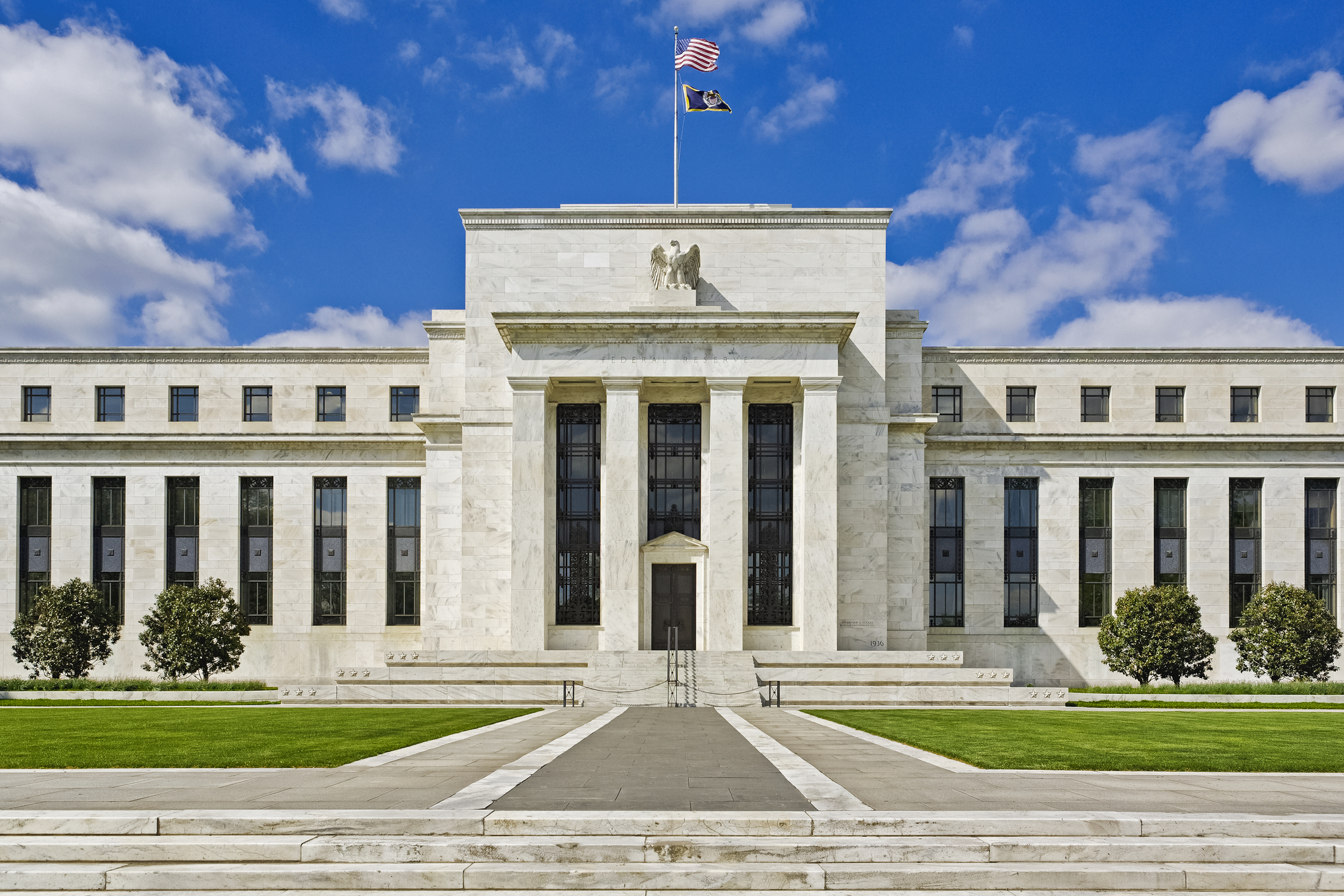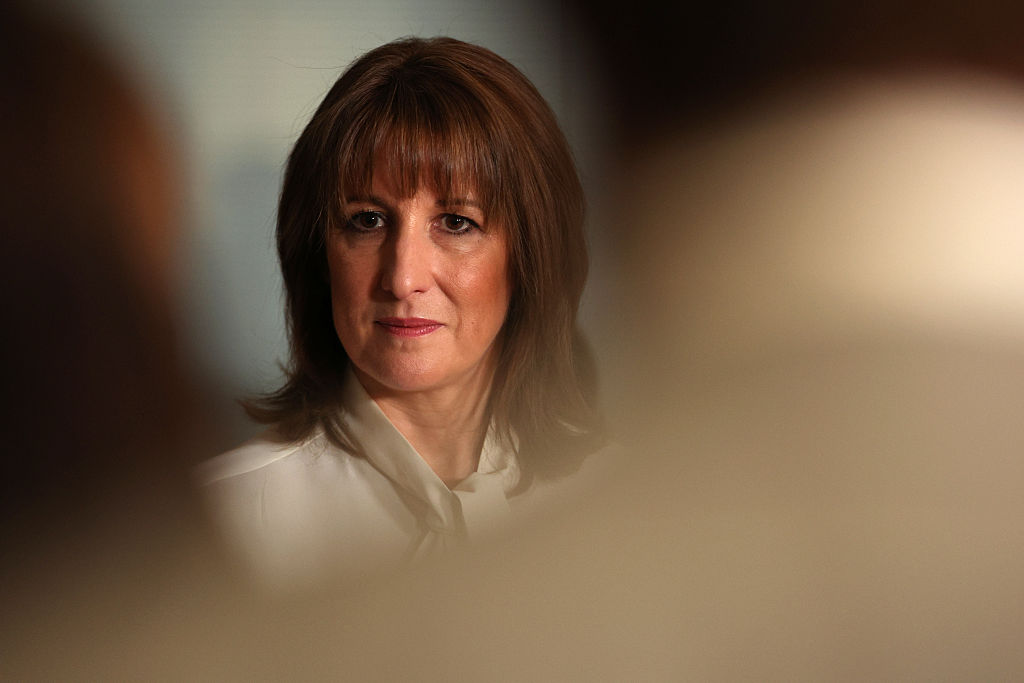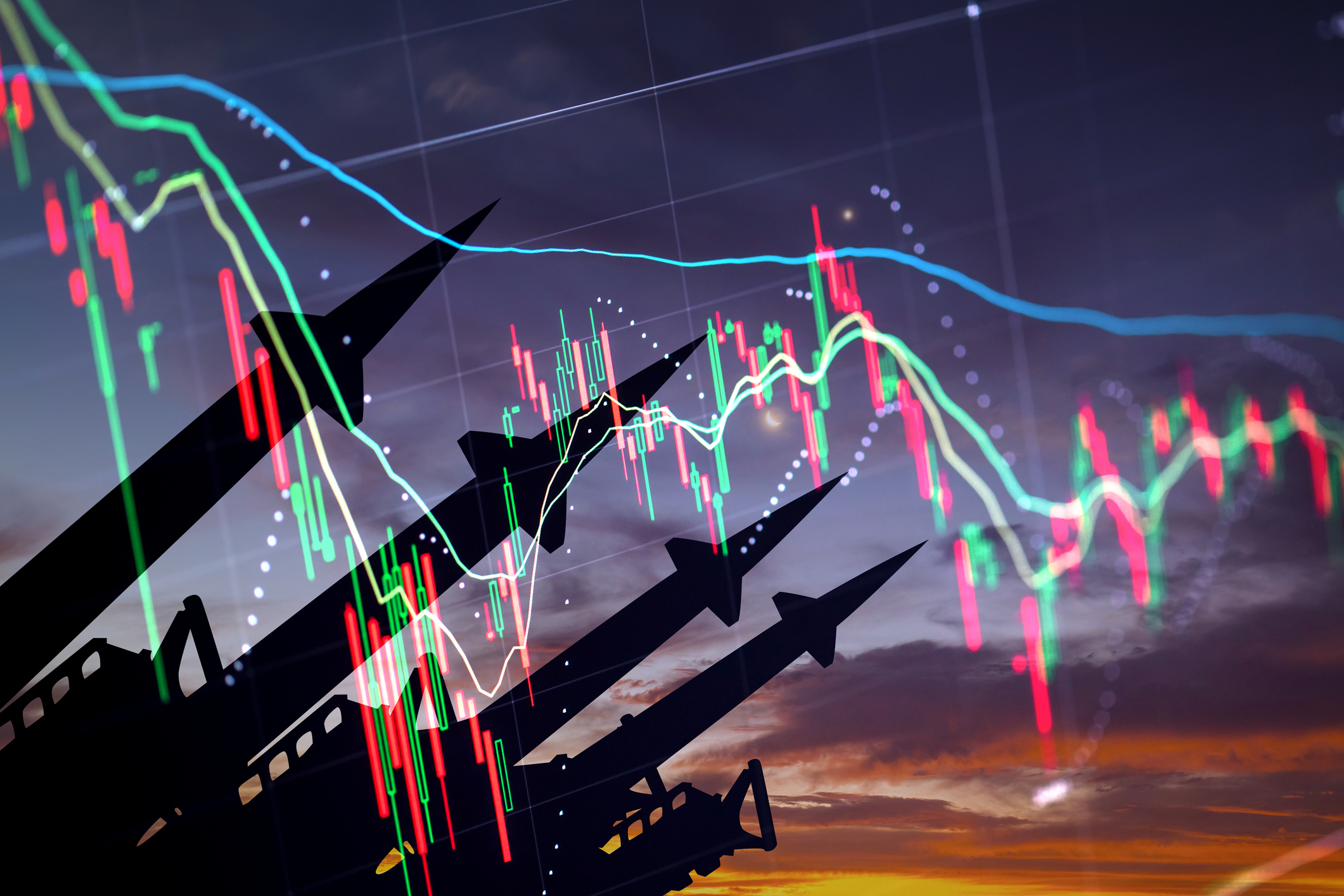Do we need central banks, or is it time to privatise money?
Free banking is one alternative to central banks, but would switching to a radical new system be worth the risk?


The gnostic utterances of Jerome Powell, chairman of the American central bank, are these days pored over ever more intently by investors and analysts seeking to divine the future direction of interest rates. And for good reason: the interest rate set by the Federal Reserve is the most important number in the financial markets. The US is the world’s most important economy and its markets set the tone for global asset prices.
What investors want to know above all is the likely future direction of the Fed’s “benchmark federal funds rate”, the rate at which banks borrow from each other overnight, which in turn is deemed to have a powerful influence on other interest rates, including those paid for business or personal loans or mortgages, or earned on savings. Globally it will have a big impact on whether money flows into or out of emerging markets, for example, with knock-on effects everywhere.
In short, the number the Fed comes up with has a big influence on whether the world is making as good a living as it could be. If businesses are going to make new investments to produce more or become more productive or make a venture into new products or services, they need households and other savers to supply the capital to finance it. Balanced, stable growth demands that total investment in the economy be equal to the pool of available capital or savings.
MoneyWeek
Subscribe to MoneyWeek today and get your first six magazine issues absolutely FREE

Sign up to Money Morning
Don't miss the latest investment and personal finances news, market analysis, plus money-saving tips with our free twice-daily newsletter
Don't miss the latest investment and personal finances news, market analysis, plus money-saving tips with our free twice-daily newsletter
For that to happen, interest rates need to be high enough to convince savers to save and low enough to incentivise borrowers to borrow, as the Brookings Institution explains. The interest rate that achieves this over the long run is known as the “neutral rate”. The Fed sets the rate above the neutral rate if it wants to cool an economy it thinks is overheating or below it if it wants to stimulate a flagging economy. It’s vital that the price is right.
It would seem to be a bit of a problem, then, that central bankers and other economic experts can’t agree on what the neutral rate actually is. It has long been the subject of intense debate, one that heated up in recent years as economists disagreed over whether the higher interest rates introduced post-Covid to restrain inflation had gone too high and were hence holding the economy back. The neutral rate – also known as the long-run equilibrium interest rate, the natural rate, or r* – is defined as the short-term interest rate that would prevail if the economy were at full employment and inflation stable, and if monetary policy were neither contractionary nor expansionary. In the long run, it is determined by the supply of and demand for savings.
But it is a theoretical concept, not something that can actually be observed in the wild. The Fed does not set the neutral rate, it just tries to estimate what it is. Economists use different models to try to pin it down, and estimates of what it might be vary. Some even insist that it doesn’t exist – that it makes no sense to try to estimate a single, economy-wide interest rate. That would be awkward for the Fed, which bases its most important decisions on some measure of it.
All of which goes to illustrate a puzzle about our societies – that monetary policy, as practised in the US, the UK and many other countries, assumes that central bankers, as central planners, can do a better job than financial markets in setting rates that will maximise economic output and stability while keeping a lid on inflation, even if they are, as they must be, flying blind. Why? We don’t have a central authority to set the price of food or shoes. Why do we need one to set the price of money and retain monopoly control over the supply of it? Why not privatise money?
Is there an alternative to central banks?
The idea that central banks are a necessary feature of modern economies has long “reigned supreme and is virtually unquestioned” in economics, as Kevin Dowd points out in The Experience of Free Banking (IEA, 2023), a collection of essays reissued last year. Even economists who are generally sympathetic to laissez-faire, such as Milton Friedman, accepted that money and banking could not just be left to markets. The issue of the national currency was deemed to be a “natural monopoly” that was properly the responsibility of the state, or more recently of central banks under the auspices of the state. There has, of course, been plenty of controversy over how much power the central bank should have and just what it should do, as Dowd points out, but no respectable economist suggested that central banks should be abolished – until, that is, Friedrich Hayek suggested in 1976 that the only way to achieve monetary stability was to “denationalise money”.
The most extreme version of the theories that developed following his suggestion advocates the abolition of central banks and the introduction instead of a system of “free banking”, defined as a system in which private banks are free to issue their own money under competitive conditions, typically convertible into gold or some other commodity standard, and in a legal environment in which the public is free to accept or reject bank currency as they see fit. That might sound impossibly radical, but following Hayek’s suggestion a major research effort revealed that free-banking systems had existed in the past and that they had indeed a long and respectable history. Dowd’s book presents an overview of the world experience of free banking, with examples from Australia, Belgium, Canada, Chile, Colombia, China, France, America, Italy, Sweden and Switzerland.
Perhaps the best-known example, however, is Scotland prior to 1844, thanks in part to Adam Smith’s assessment in The Wealth of Nations that its free banking system had contributed in a major way to the country’s economic development. In 1745, says Dowd, per capita income in Scotland was about half what it was in England at the time. A century later – a century that corresponds to the heyday of Scottish free banking – Scottish per capita income had risen to almost English levels despite England’s own rapid growth, and despite suffering a number of disadvantages, such as greater distance to markets, inferior infrastructure and fewer raw materials.
Competition between the free banks was fierce, and the fight for market share honed bankers’ liquidity and capital-management policies, their entrepreneurial skills and willingness to innovate. Banks provided commerce and industry with easy access to credit that was both inexpensive and relatively easy to obtain, provided the public with loans and monetary notes that were more convenient and easier to hold than coins, and promoted habits of thrift by offering them higher returns on their savings than they could obtain elsewhere.
Walter Scott wittily defended the Scottish system against its detractors in a way that might remind you of those economists beavering away in the Fed: “Here stands Theory, a scroll in her hand, full of deep and mysterious combinations of figures, the least failure in any one of which may alter the result entirely, and which you must take on trust … There lies before you a practical System, successful for upwards of a century. The one allures you with promises, as the saying goes, of untold gold, the other appeals to miracles already wrought in your behalf. The one shows you provinces, the wealth of which has been tripled under her management – the other, a problem which has never been practically solved. Here you have a pamphlet – there a fishing town – here the long-continued prosperity of a whole nation – and there the opinion of a professor of Economics, that in such circumstances she ought not by true principles to have prospered at all.”
The historical experience of free banking, both in Scotland and around the world, shows that the conventional wisdom about what would result from such an experiment must be rejected, concludes Dowd. Free banking systems were not in fact prone to inflation, competition did not destabilise them, and there’s some evidence that interest rates were more stable. The banks had to be careful and prudent in their lending, reserve and capital policies because they could not expect others to shoulder their losses or bail them out. Banks did sometimes fail under these laissez-faire conditions, but the failures do not appear to have been seriously contagious and major crises were rare. Indeed, where such crises did occur, they could usually be attributed to state pressure for cheap loans from the banks, which undermined their financial health, or to other forms of state intervention. Free banking – as in Scotland, for example – generally ended, says Dowd, because it was suppressed for political, fiscal or ideological reasons, and not because of any inherent flaws.
Walter Bagehot deemed central banking irreversible. Economic historian Charles Kindleberger noted a “strong revealed preference in history for a sole issuer” of currency. But the preference that history really reveals is that of the fiscal authorities, not of money users, as Lawrence White and George Selgin, two of the authors in Dowd’s book, have pointed out. In some places, such as London, free banking never received a trial for that reason. “Central banks primarily arose, directly or indirectly, from legislation that created privileges to promote the fiscal interests of the state or the rent-seeking interests of privileged bankers, not from market forces.”
Could it happen again?
Does any of this have relevance to the modern world? The historical record, according to the free banking advocates, shows that free banking, unlike the system of central banks, is not prone to inflation or banking instability. Those are features that would seem to be worth having. And if it worked in the past, then why not now? In theory, it seems, none at all. But there’s the small matter of the real world. Free banking, as Dowd admits, is not in the so-called “Overton Window” – that narrow range of policy options deemed to be politically possible. But even were that window to shift – as happens especially during crises – the case for free banking to date has relied heavily on theoretical arguments and history drawn from the 18th and 19th centuries, as a 2012 paper from the Cato Institute by Gerald O’Driscoll pointed out. However persuasive the arguments, they would come up against institutional inertia. Even if we agree that it would have been better if central banking had never been, the cost/benefit calculation for abolishing it has not been convincingly made.
The world of old in which free banking thrived is simply not the one we live in. None of the examples in Dowd’s book, extend far into the 20th century. The world in the preceding centuries was not as deeply interconnected through the financial system as it is today, and any proposal that we change that system must start from where we are – which is not a blank page, but a world where the incredibly complex, regulated, scaled-up infrastructure of modern banking already exists. And it works: the world with central banks is in many ways a better place than it was just a few generations ago and it continues to deliver material progress. Is it really sensible to think now about beginning anew? How would the change be carried out, and at what risk? Which piece of this complicated Jenga of a system would you pull out? And once pulled, just how confident are we that what will result will be stable? Even if it wobbles and doesn’t fall, will we be left with a structure that is radically better than what stood before? Is it worth playing the game given the risks we can think of, not to mention the unknown unknowns?
Under the current system, for example, we have instant transfer of capital, and relatively unfettered global trade in goods and services, where we pay for goods in our own currencies into a foreign bank account and don’t even need to think about all the complexities. How would that work under free banking? Will my pound from NatWest be accepted in the US, and how many pounds from HSBC is it worth? Will each bank have different exchange rates? The system instantly becomes incredibly more complex, increasing trade friction and transaction costs. Imagine we did in fact live in such a world. Wouldn’t a simpler system, where there is centralisation and central banks, to help ease some of these issues, seem very attractive?
It’s far from obvious, in short, that it would be worth the bother and risk of switching from central banks to an alternative system that has not been tried in the modern world, and this fundamental problem is not one addressed very deeply by free banking advocates. Perhaps that’s why the Fed is still fumbling around in the dark for a number that might not even exist. There’s simply no alternative.
This article was first published in MoneyWeek's magazine. Enjoy exclusive early access to news, opinion and analysis from our team of financial experts with a MoneyWeek subscription.
Get the latest financial news, insights and expert analysis from our award-winning MoneyWeek team, to help you understand what really matters when it comes to your finances.

Stuart graduated from the University of Leeds with an honours degree in biochemistry and molecular biology, and from Bath Spa University College with a postgraduate diploma in creative writing.
He started his career in journalism working on newspapers and magazines for the medical profession before joining MoneyWeek shortly after its first issue appeared in November 2000. He has worked for the magazine ever since, and is now the comment editor.
He has long had an interest in political economy and philosophy and writes occasional think pieces on this theme for the magazine, as well as a weekly round up of the best blogs in finance.
His work has appeared in The Lancet and The Idler and in numerous other small-press and online publications.
-
 Football fans issued warning over ticket scams ahead of 2026 World Cup
Football fans issued warning over ticket scams ahead of 2026 World CupSantander customers lost more to football scams in the first six months of 2025 compared to the same period in 2024, when total losses surged due to the Euros
-
 Nationwide fined £44 million over “inadequate” anti-money laundering systems
Nationwide fined £44 million over “inadequate” anti-money laundering systemsFailings in Nationwide’s financial crime processes between October 2016 to July 2021 meant one criminal was able to deposit £26 million from fraudulent Covid furlough payments in just eight days.
-
 Rachel Reeves's punishing rise in business rates will crush the British economy
Rachel Reeves's punishing rise in business rates will crush the British economyOpinion By piling more and more stealth taxes onto businesses, the government is repeating exactly the same mistake of its first Budget, says Matthew Lynn
-
 Leading European companies offer long-term growth prospects
Leading European companies offer long-term growth prospectsOpinion Alexander Darwall, lead portfolio manager, European Opportunities Trust, picks three European companies where he'd put his money
-
 How to capitalise on the pessimism around Britain's stock market
How to capitalise on the pessimism around Britain's stock marketOpinion There was little in the Budget to prop up Britain's stock market, but opportunities are hiding in plain sight. Investors should take advantage while they can
-
 London claims victory in the Brexit wars
London claims victory in the Brexit warsOpinion JPMorgan Chase's decision to build a new headquarters in London is a huge vote of confidence and a sign that the City will remain Europe's key financial hub
-
 The consequences of the Autumn Budget – and what it means for the UK economy
The consequences of the Autumn Budget – and what it means for the UK economyOpinion A directionless and floundering government has ducked the hard choices at the Autumn Budget, says Simon Wilson
-
 Reinventing the high street – how to invest in the retailers driving the change
Reinventing the high street – how to invest in the retailers driving the changeThe high street brands that can make shopping and leisure an enjoyable experience will thrive, says Maryam Cockar
-
 The global defence boom has moved beyond Europe – here’s how to profit
The global defence boom has moved beyond Europe – here’s how to profitOpinion Tom Bailey, head of research for the Future of Defence Indo-Pac ex-China UCITS ETF, picks three defence stocks where he'd put his money
-
 Profit from a return to the office with Workspace
Profit from a return to the office with WorkspaceWorkspace is an unloved play on the real estate investment trust sector as demand for flexible office space rises